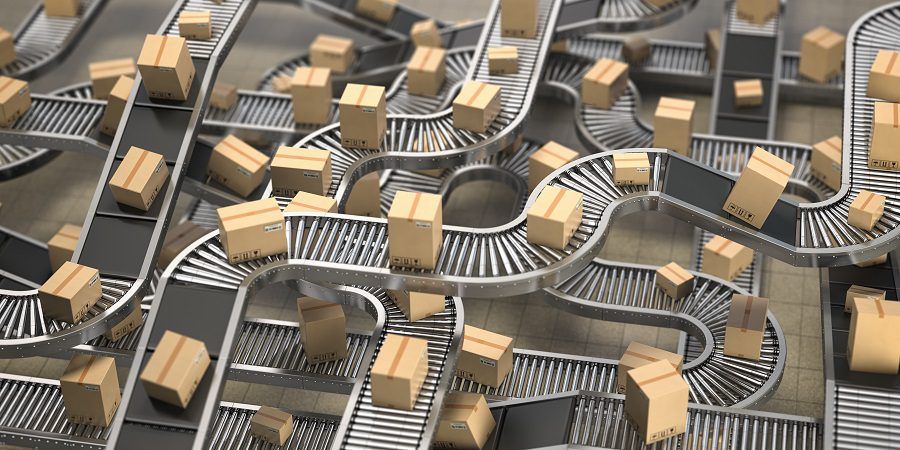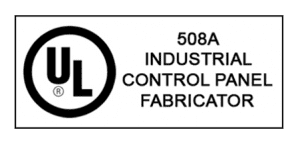Conveyor systems have become more widely used throughout the world, with the global market reaching $8.8 billion in 2020 and still climbing. Different types of conveyors, such as chain conveyors, belt conveyors, or the roller conveyor, offer various benefits, and many have a range of uses. As technologies advance, types of conveyor systems are developed and optimized. The efficiency they lend to warehousing applications in various industries likely contributes to this sustained growth. Naturally, this begs the question of how to choose the right conveyor system to support your organization’s needs. From high volume to automated sortation needs, we can help you find the best solution.
Getting Started Choosing the Right Conveyor System
A conveyor system consists of rollers, conveyor belts, buckets, wheels, chains, or other apparatuses to carry materials through a production process, sort items in shipping and warehousing, etc. The type of system and components you choose will largely depend on what you intend to do with it. For example, this means you should know whether you need a system that sorts or moves up or down, as well as how much the conveyor system will be moving.
Basic Components of a Conveyor System
A conveyor system is primarily comprised of the following three components:
- A drive system, which keeps the other components moving. It’s often motorized.
- Belt support, which keeps the belt level and prevents sagging.
- A pulley system, which controls the belt’s movement. Each conveyor unit will usually have an active (or powered) pulley at one end and an idle one at the other.
Of course, there are often additional components added onto conveyor systems, but the basic elements described above are what keep the whole system functioning. Add-on items would depend on your intended application.
Common Uses of Conveyor Systems
Conveyor systems are used in many applications, including warehousing. In a warehouse setting, they might be used to move the following items:
- Pallets
- Trays
- Bags and totes
- Boxes
- Mailers
- Cases
- Bulk materials
The function of these machines in warehousing is typically sortation, in which items are sorted along the line into different areas depending on where they are stored, whether they’re being shipped, etc.
Common Types of Conveyor Systems
Conveyor systems come in various types that are designed for specific needs, including:
- Belt conveyors. These basic devices are the classic idea of a conveyor. Pulleys turn with the help of a motor that then rotates the belt.
- Belt-driven live rollers. Similar to a belt conveyor, these operate using a single belt that moves the rollers above.
- Motorized-drive roller conveyors. Using a little ingenuity, this conveyor system puts a motor inside the roller. Typically, only one motor per zone is required, and they move materials and packages at high speeds.
- Line shaft driven conveyors. Line shaft conveyors use a shaft drive that stretches parallel to the conveyor. With the use of elastic polymer bands, energy is transferred from the line shaft to the rollers on the conveyor.
- Bucket conveyors. These types of conveyors are meant to move materials vertically by scooping them up into their bucket and then spilling the materials out at their destination. Grain elevators are an excellent example of a bucket conveyor system.
- Chain-driven conveyors. Using rollers, these devices have sprockets at the ends that are driven by a chain that is connected to a motor.
- Gravity conveyors. These are the simplest, and oldest, of all the devices. Gravity roller conveyors use the power of gravity to move materials. With a line of rollers set at a very slight downward angle, materials are pushed along the conveyor with gravity and momentum.
- Pneumatic conveyors. Through a vacuum, or with air pressure, materials that are dry from one area to another. This type of conveyor works best for dry bulk goods that can move with fluidity, such as sugar, sand, metal powders, or flour.
- Cable conveyors. Cable conveyor systems are perfect for keeping some materials quarantined from others. They’re also incredibly versatile and can move horizontally, vertically, and even around corners if need be. Using steel cables, materials are moved along the belt.
- Spiral conveyors. Set in a spiral shape, this conveyor system can transport materials, medium and large, vertically and continuously. They can typically move quickly and are easily customizable for your facility’s needs.
- Narrow belt conveyors. For very tight spaces or narrow goods, narrow belt conveyor systems operate in much the same way as a standard belt conveyor. They are equally as customizable and can be used just as easily for very small goods.
- Skate wheel conveyors. This type of conveyor system uses simple skate wheels that can be attached to axles. They can be on flexible systems or rigid systems, and they work great with rigid containers with flat bottoms.
- Roller wheel conveyors. Roller wheel conveyors are similar to skate wheel conveyors, but they’re typically more like tubes and roll in much the same way as skate wheel conveyors. In addition, they’re also best used for containers with rigid, flat bottoms.
In warehousing applications, a belt conveyor and a roller conveyor are the ones you’ll most commonly see. While they may be the most common conveyor systems, they may not be the best option for every facility. There are other factors you’ll want to consider when building the best conveyor system for your facility.
Key Considerations When Choosing a Conveyor System
Conveyor machines can offer a wide range of advantages in a plant operating environment, a warehouse, and other facilities, but only if the proper selection of the conveyor type was made or if they’re properly designed. Selecting the right conveyor for your business can be difficult especially due to floor space, the special layout of your facility, or how much room you have available and existing equipment. So when choosing components and layouts for your conveyor system, keep the following key factors in mind to help with proper conveyor selection.
Safety
First and foremost is safety. An effective conveyor system allows heavy materials to be moved across facilities, up and down levels, and so forth, all without the risks of manual handling (dropping, falling from height, muscle straining, etc.). Systems that don’t require manual involvement are ideal for safety purposes since they don’t require someone to try to make adjustments as the system is moving. The system you choose should be engineered for safety with effective failsafe mechanisms in place.
Volume
A well-designed conveyor system will also be able to handle the volumes of product you need to move in your facility. For heavier volumes of materials and goods, chain conveyors and live roller conveyors are two great options for high-volume material handling systems. Belt conveyors, gravity conveyors, and roller conveyors work well for light material loads.
Sortation Needs
These systems offer a wide range of conveyor units and sorters to match your sortation needs. The vast number of possible configurations allows the system to be designed to precise specifications. Spiral conveyors can be adapted for multi-stream flow, but nearly every type of conveyor system can be customized and adapted for sortation purposes.
Process Automation Needs
By automating sortation, warehouses are able to utilize their personnel in a more efficient manner while also reducing their processes’ exposure to human error, ultimately creating a more reliable system that can increase productivity. Automated systems are ideal for facilities that have lighter staffing, but they can also help lessen the amount of staffing needed for some facilities. Automation can be incredibly helpful and can also assist with safety by taking the human element out of the equation.
Conveyor Machine FAQs
Some common questions we get about conveyor systems include the following.
What is the most common type of conveyor?
By far the most common type of conveyor is the belt conveyor. They come in many varieties, and they’re often integral to moving and sorting items in a facility. Additionally, roller conveyor systems and powered roller conveyors are common as well.
What type of motors are used in conveyor systems?
Usually, AC motors are best for continuous process conveyor systems because they are low maintenance and very reliable motors. However, BLDC motors can adjust speeds well, which can be helpful too.
What are common applications for conveyors?
Conveyors are typically used to move, sort, or dispose of a wide range of items in facilities.
Whether required to transport materials vertically, horizontally, between facilities, or across a wide or narrow space, conveyor systems do the heavy lifting so that people don’t have to.
Designing an Effective Conveyor System
To design a conveyor system that will do everything you need it to do, consider the following factors before beginning the design process:
- Product specifications, such as weight, size, fragility, etc.
- Flow rate requirements, including both your typical daily flow rate and peak demand. Consider the lightest load you’ll have to move, as well as the heaviest. Also, determine how much the system will be used.
- Process requirements, such as the distance items will need to be moved, their transfer speed, available space, etc.
- Transfer requirements, as in points where items will be transferred to and from the conveyor system.
With these criteria in mind, Precision Warehouse will work with you to design the right conveyor system for your facility. With many different options to choose from, no matter the shape and size of your facility, our customizable systems can help you move whatever materials and goods you need safely and efficiently.
Precision Warehouse Design offers a wide range of conveyor units and sorters, and our process includes best practice components that allow us to design and deliver complex systems faster than our competitors. With nearly 20 years of operation, Precision Warehouse Design strives to offer the best to each of our clients through exemplary customer service, and the very best in engineering and design. To learn more, take a look at our portfolio, or contact Precision Warehouse Design.




